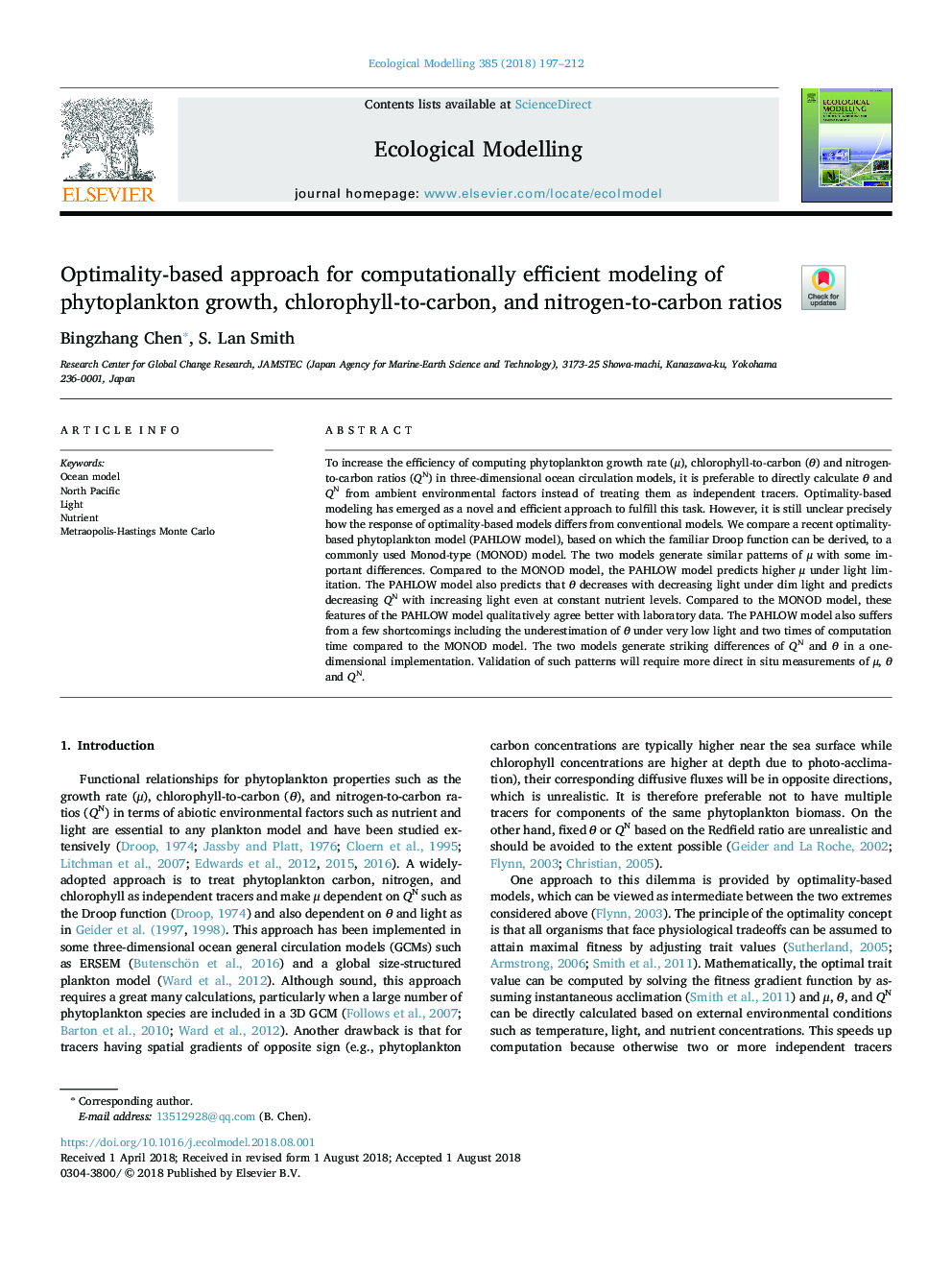| Article ID | Journal | Published Year | Pages | File Type |
|---|---|---|---|---|
| 8845971 | Ecological Modelling | 2018 | 16 Pages |
Abstract
To increase the efficiency of computing phytoplankton growth rate (μ), chlorophyll-to-carbon (θ) and nitrogen-to-carbon ratios (QN) in three-dimensional ocean circulation models, it is preferable to directly calculate θ and QN from ambient environmental factors instead of treating them as independent tracers. Optimality-based modeling has emerged as a novel and efficient approach to fulfill this task. However, it is still unclear precisely how the response of optimality-based models differs from conventional models. We compare a recent optimality-based phytoplankton model (PAHLOW model), based on which the familiar Droop function can be derived, to a commonly used Monod-type (MONOD) model. The two models generate similar patterns of μ with some important differences. Compared to the MONOD model, the PAHLOW model predicts higher μ under light limitation. The PAHLOW model also predicts that θ decreases with decreasing light under dim light and predicts decreasing QN with increasing light even at constant nutrient levels. Compared to the MONOD model, these features of the PAHLOW model qualitatively agree better with laboratory data. The PAHLOW model also suffers from a few shortcomings including the underestimation of θ under very low light and two times of computation time compared to the MONOD model. The two models generate striking differences of QN and θ in a one-dimensional implementation. Validation of such patterns will require more direct in situ measurements of μ, θ and QN.
Related Topics
Life Sciences
Agricultural and Biological Sciences
Ecology, Evolution, Behavior and Systematics
Authors
Bingzhang Chen, S. Lan Smith,
